Abstract
We measured bone mineral density (BMD) of the proximal femur, lumbar spine, or both by dual photon absorptiometry in 205 normal volunteers (123 women and 82 men; age range 20 to 92 yr) and in 31 patients with hip fractures (26 women and 5 men; mean age, 78 yr). For normal women, the regression of BMD on age was negative and linear at each site; overall decrease during life was 58% in the femoral neck, 53% in the intertrochanteric region of the femur, and 42% in the lumbar spine. For normal men, the age regression was linear also; the rate of decrease in BMD was two-thirds of that in women for femoral neck and intertrochanteric femur but was only one-fourth of that in women for lumbar spine. This difference may explain why the female/male ratio is 2:1 for hip fractures but 8:1 for vertebral fractures. The standard deviation (Z-score) from the sex-specific age-adjusted normal mean in 26 women with hip fracture averaged −0.31 (P < 0.05) for the femoral neck, −0.53 (P < 0.01) for the intertrochanteric femur, and +0.24 (NS) for the lumbar spine; results were similar for 5 men with hip fractures. By contrast, for 27 additional women, ages 51-65 yr, with only nontraumatic vertebral fractures, the Z-score was −1.92 (P < 0.001) for the lumbar spine. Thus, contrary to the view that osteoporosis is a single age-related entity, our data suggest the existence of two distinct syndromes. One form, “postmenopausal osteoporosis,” is characterized by excessive and disproportionate trabecular bone loss, involves a small subset of women in the early postmenopausal period, and is associated mainly with vertebral fractures. The other form, “senile osteoporosis,” is characterized by proportionate loss of both cortical and trabecular bone, involves essentially the entire population of aging women and, to a lesser extent, aging men, and is associated with hip fractures or vertebral fractures or both.
Full text
PDF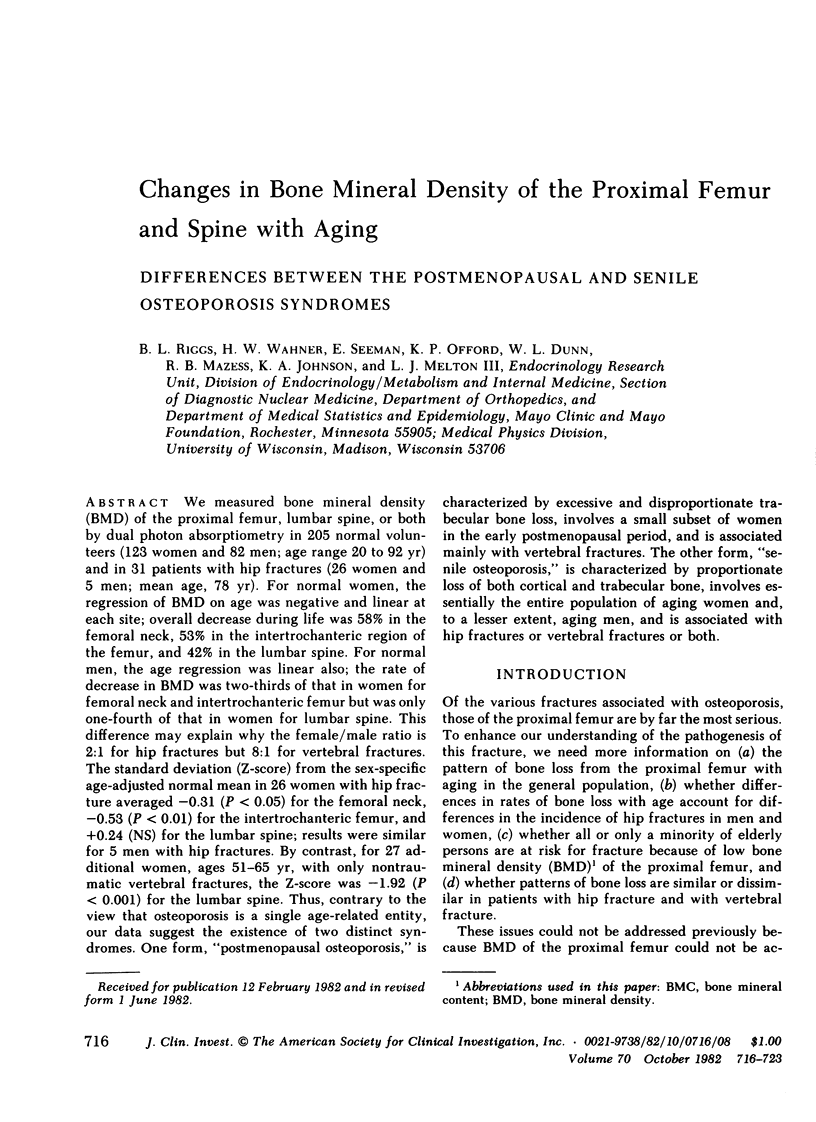
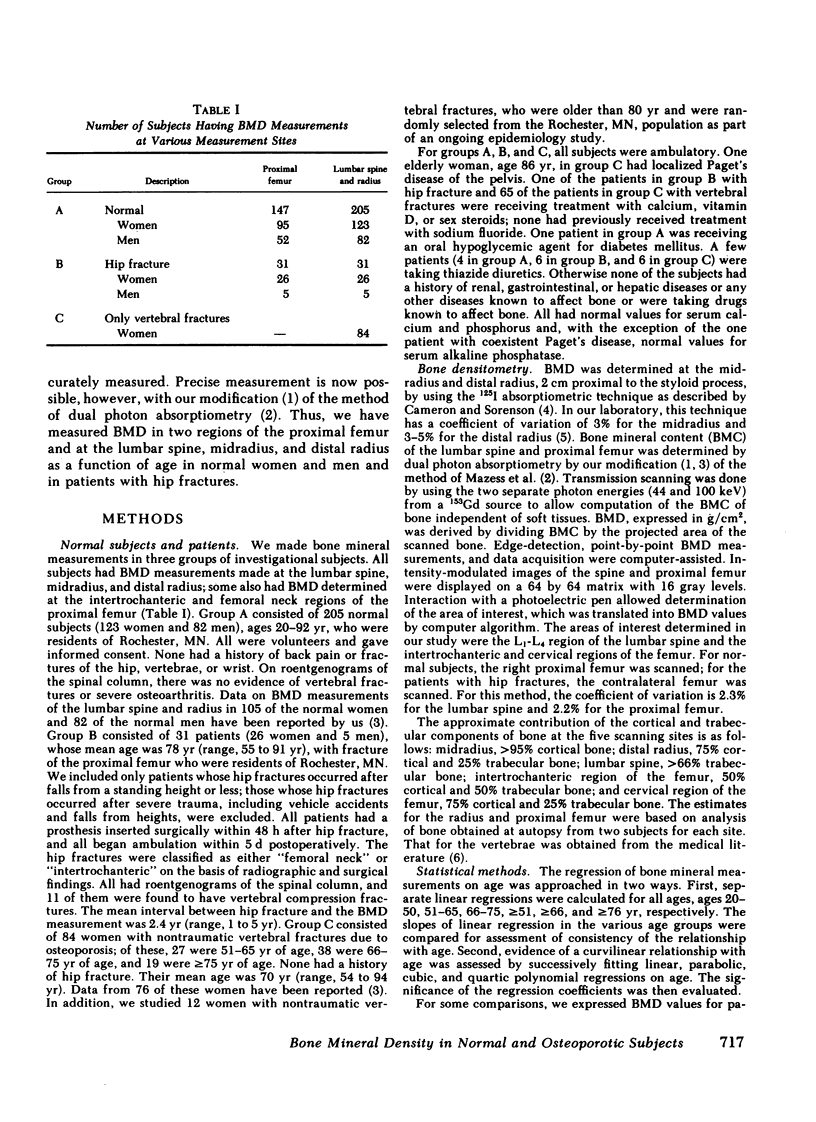
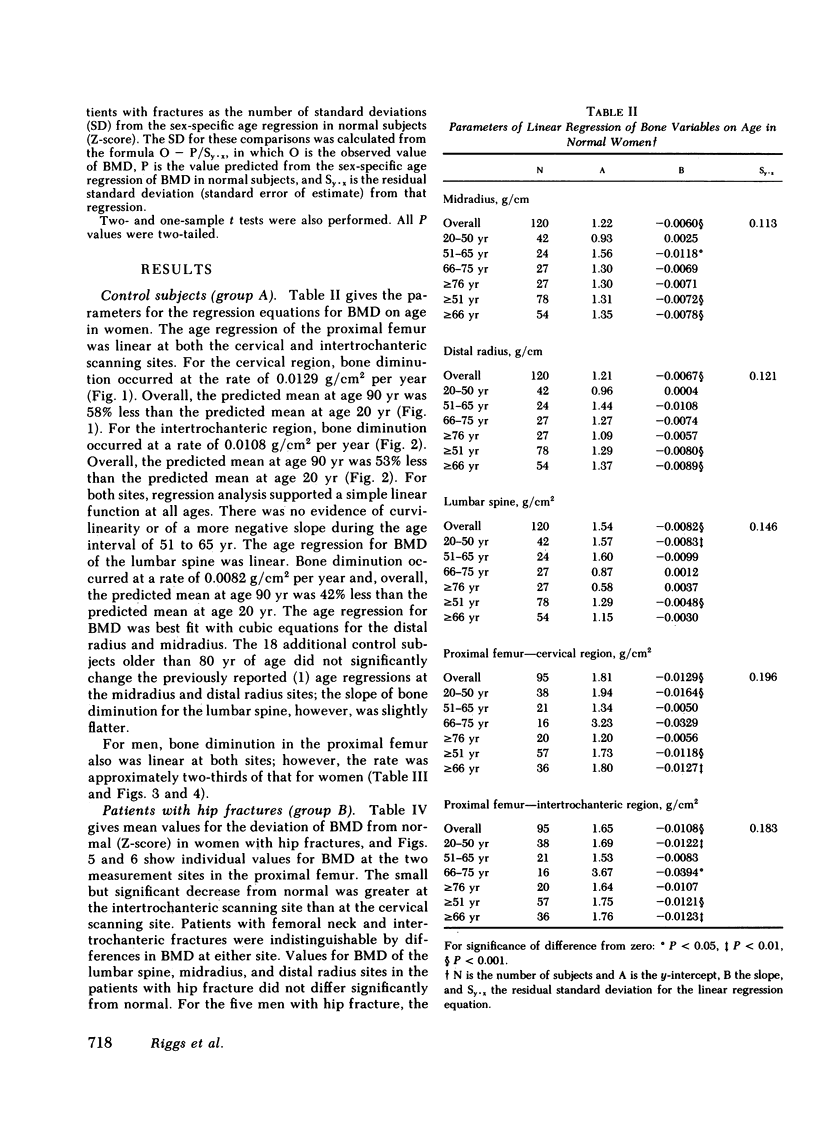
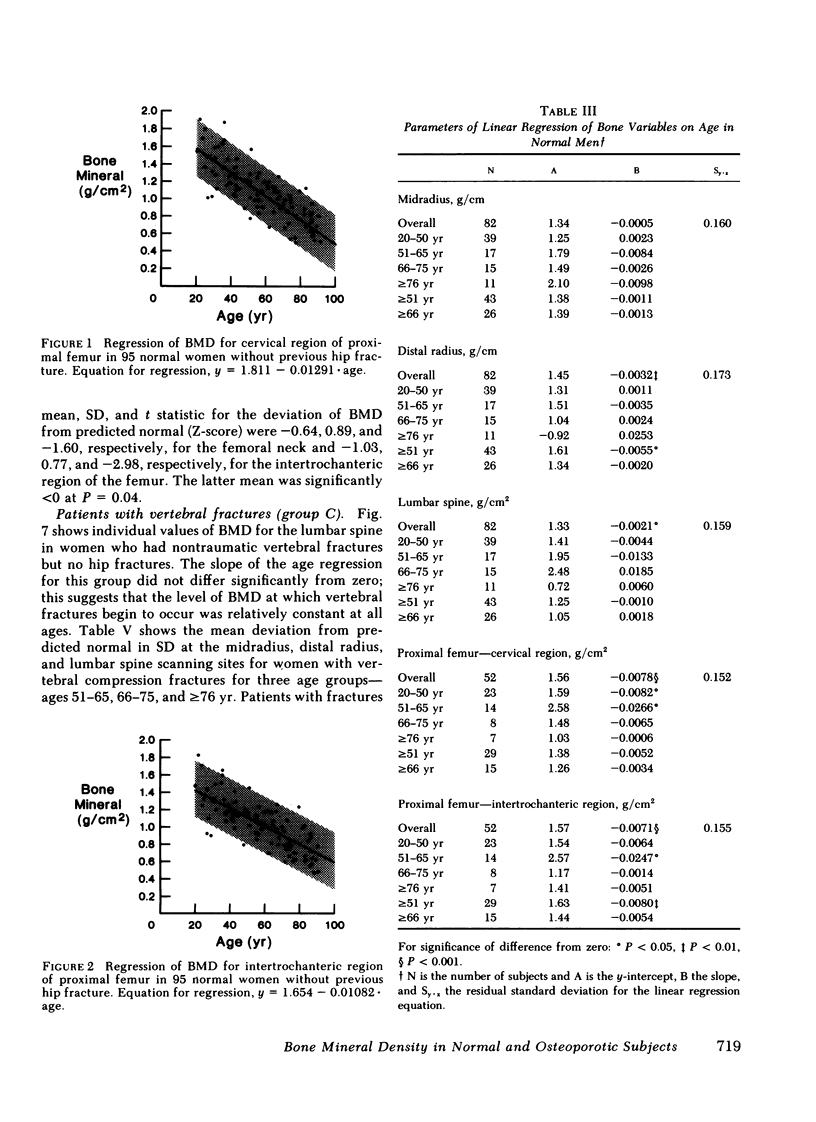
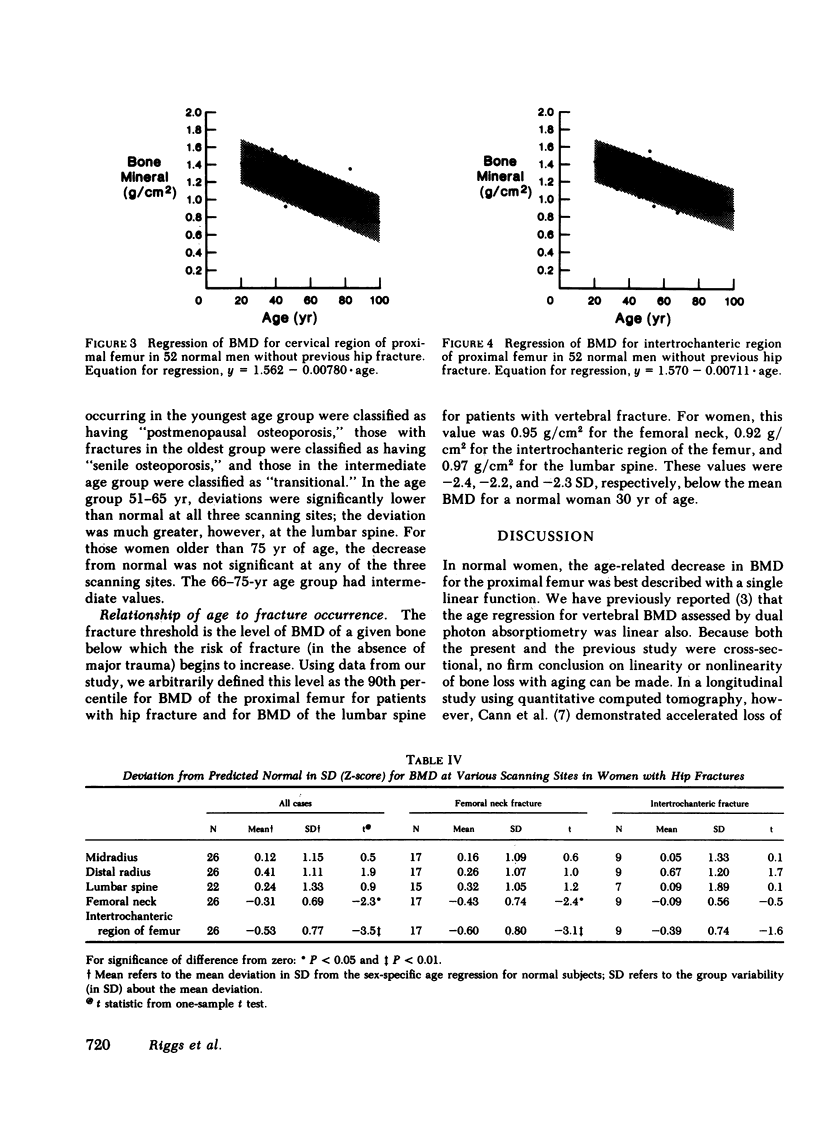
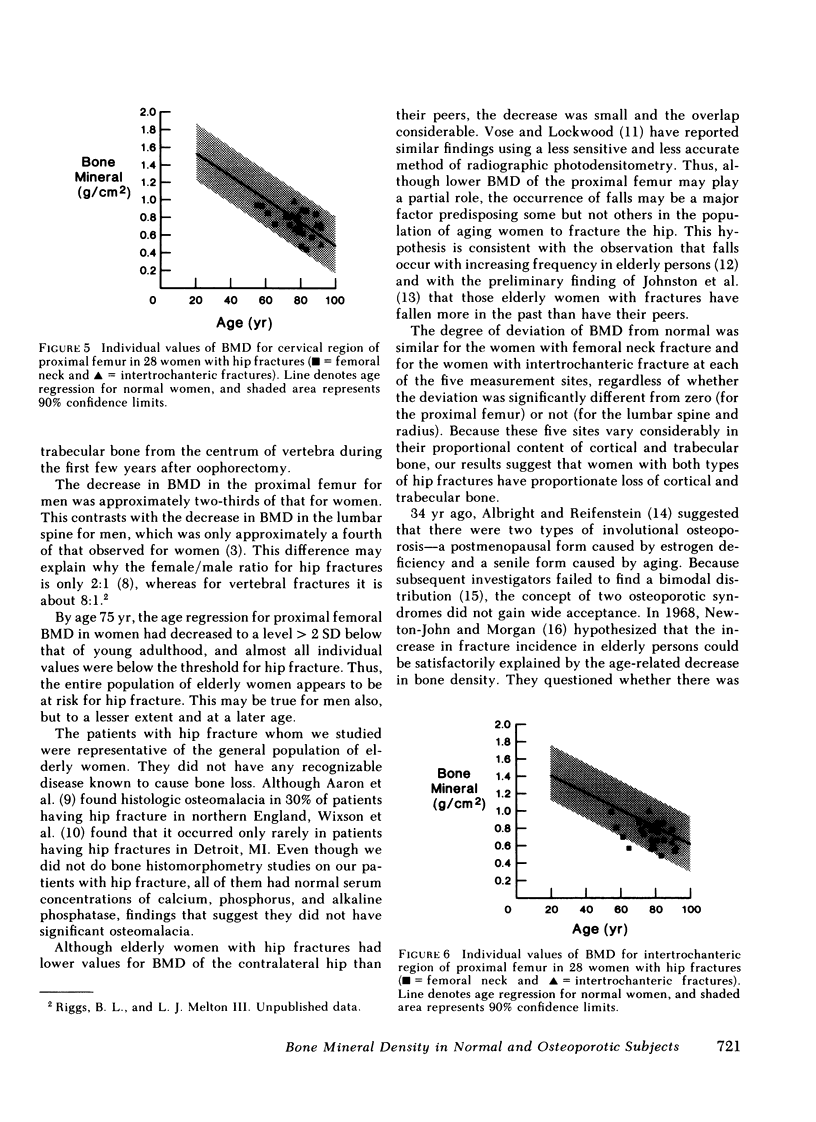
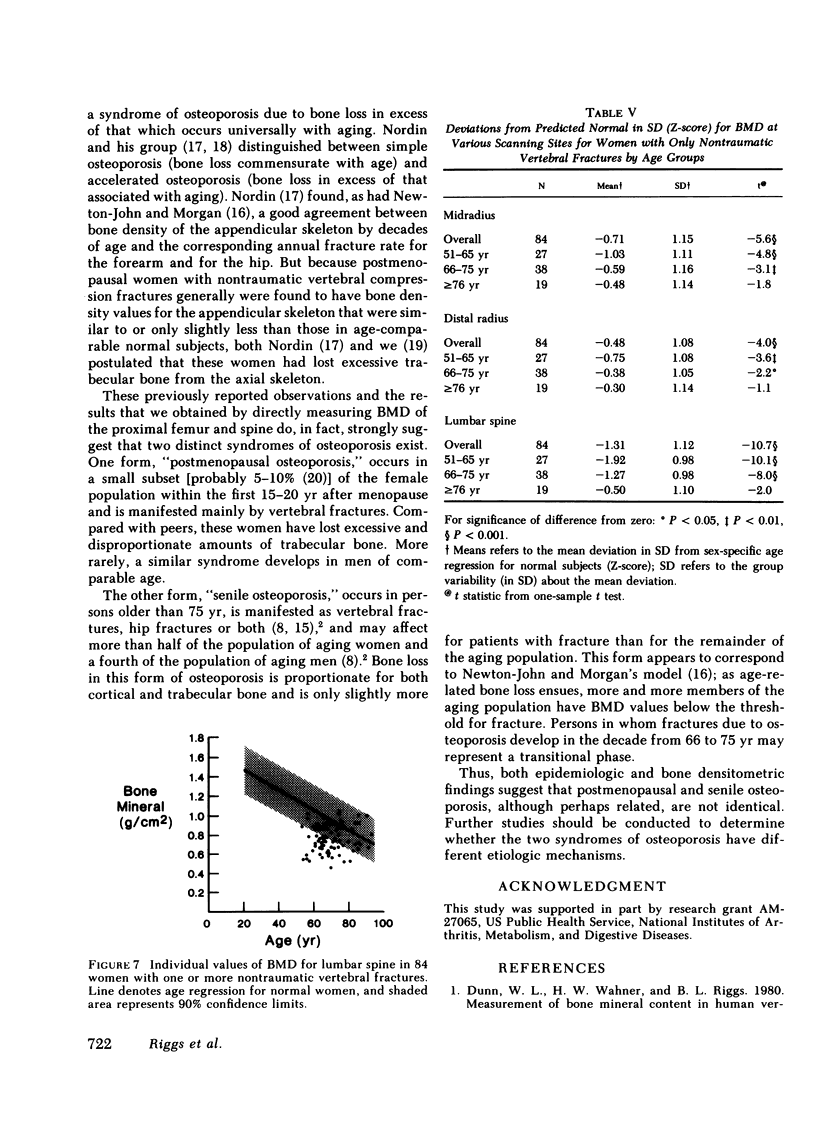
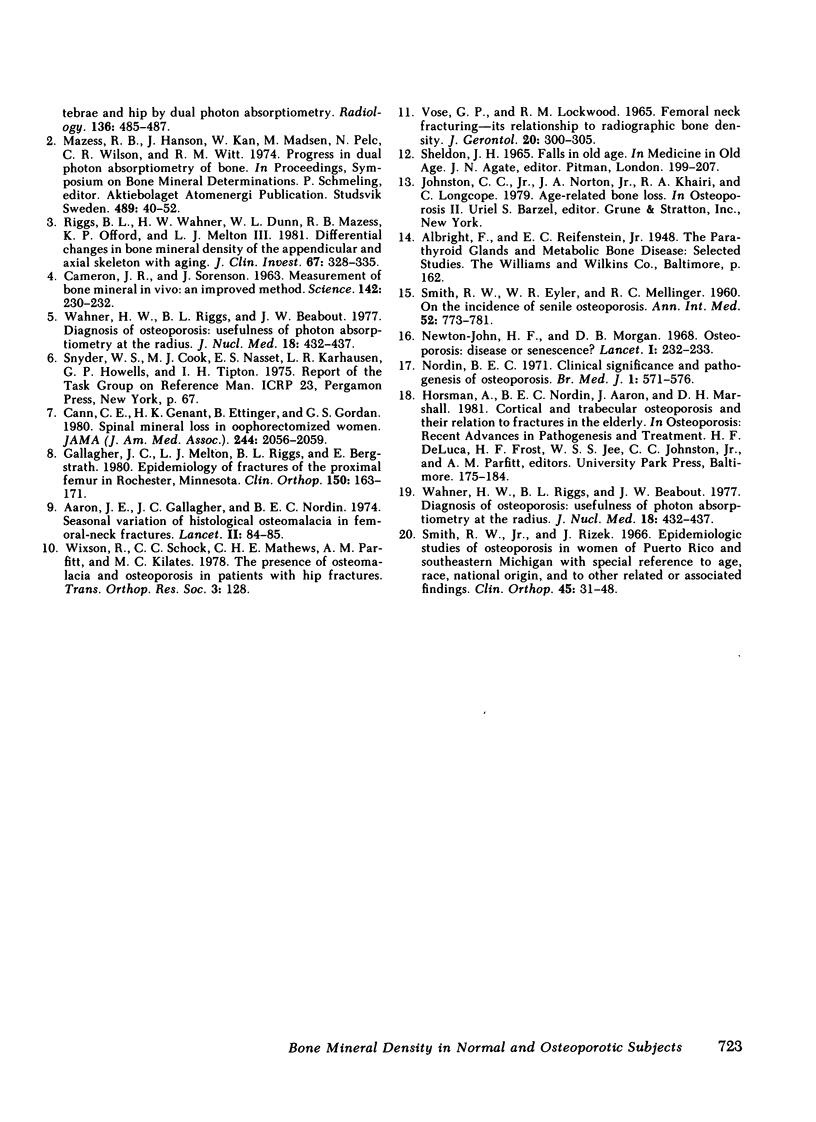
Selected References
These references are in PubMed. This may not be the complete list of references from this article.
- Aaron J. E., Gallagher J. C., Nordin B. E. Seasonal variation of histological osteomalacia in femoral-neck fractures. Lancet. 1974 Jul 13;2(7872):84–85. doi: 10.1016/s0140-6736(74)91640-7. [DOI] [PubMed] [Google Scholar]
- CAMERON J. R., SORENSON J. MEASUREMENT OF BONE MINERAL IN VIVO: AN IMPROVED METHOD. Science. 1963 Oct 11;142(3589):230–232. doi: 10.1126/science.142.3589.230. [DOI] [PubMed] [Google Scholar]
- Cann C. E., Genant H. K., Ettinger B., Gordan G. S. Spinal mineral loss in oophorectomized women. Determination by quantitative computed tomography. JAMA. 1980 Nov 7;244(18):2056–2059. [PubMed] [Google Scholar]
- Dunn W. L., Wahner H. W., Riggs B. L. Measurement of bone mineral content in human vertebrae and hip by dual photon absorptiometry. Radiology. 1980 Aug;136(2):485–487. doi: 10.1148/radiology.136.2.6773102. [DOI] [PubMed] [Google Scholar]
- Gallagher J. C., Melton L. J., Riggs B. L., Bergstrath E. Epidemiology of fractures of the proximal femur in Rochester, Minnesota. Clin Orthop Relat Res. 1980 Jul-Aug;(150):163–171. [PubMed] [Google Scholar]
- Nordin B. E. Clinical significance and pathogenesis of osteoporosis. Br Med J. 1971 Mar 13;1(5749):571–576. doi: 10.1136/bmj.1.5749.571. [DOI] [PMC free article] [PubMed] [Google Scholar]
- Riggs B. L., Wahner H. W., Dunn W. L., Mazess R. B., Offord K. P., Melton L. J., 3rd Differential changes in bone mineral density of the appendicular and axial skeleton with aging: relationship to spinal osteoporosis. J Clin Invest. 1981 Feb;67(2):328–335. doi: 10.1172/JCI110039. [DOI] [PMC free article] [PubMed] [Google Scholar]
- SMITH R. W., Jr, EYLER W. R., MELLINGER R. C. On the incidence of senile osteoporosis. Ann Intern Med. 1960 Apr;52:773–781. doi: 10.7326/0003-4819-52-4-773. [DOI] [PubMed] [Google Scholar]
- Smith R. W., Jr, Rizek J. Epidemiologic studies of osteoporosis in Women of Puerto Rico and southeastern Michigan with special reference to age, race, national origin and to other related or associated findings. Clin Orthop Relat Res. 1966 Mar-Apr;45:31–48. [PubMed] [Google Scholar]
- Wahner H. W., Riggs B. L., Beabout J. W. Diagnosis of osteoporosis: usefulness of photon absorptiometry at the radius. J Nucl Med. 1977 May;18(5):432–437. [PubMed] [Google Scholar]
- Wahner H. W., Riggs B. L., Beabout J. W. Diagnosis of osteoporosis: usefulness of photon absorptiometry at the radius. J Nucl Med. 1977 May;18(5):432–437. [PubMed] [Google Scholar]


